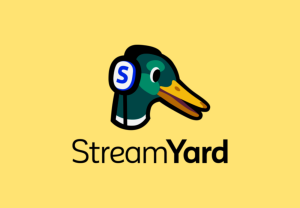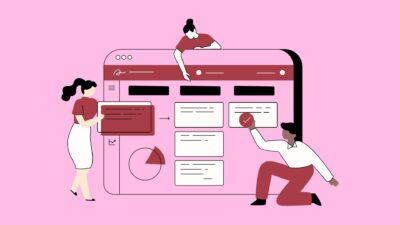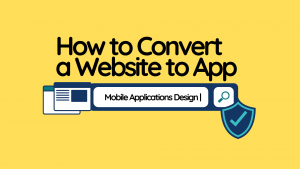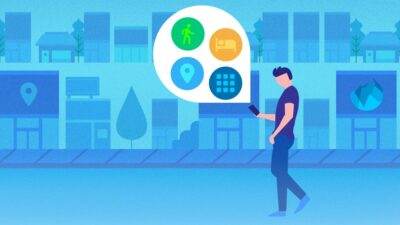For most seasoned business owners and aspiring entrepreneurs, when it comes to New Product Development (NPD) process, it often carries a mystical aura. And, when you hear the origin stories of other great ecommerce businesses, it’s often clear the journey to a finished product rarely resembles a straight line. Thus, there is a need to figure out the right process.
Bear in mind, that effective product development requires many things: market research, product management, and testing your idea to name a few. However, product development is not the same as product management. When you understand product development this way, you can see that it is not synonymous with product management in any way.
But, of course, many people mistakenly use the terms interchangeably. Indeed, it’s also clear to note that product development does not refer to a single role at all. After all, in some organizations, “product development” may be shorthand for the implementation process. With a team comprised primarily of developers, engineers, and possibly quality assurance.
But, when it comes to the house’s personnel side, it should instead view it as more of an overall process or method for bringing products to market. To be on the safe side, it makes sense to give your product roadmap every advantage you can before presenting it to your stakeholders. Luckily, this guide will offer you a few chops to get you started and keep you going.
What A New Product Development Process Usually Entails
To enumerate, Product Development refers to the complete process of taking a product to market. In addition, it also covers renewing an existing product and introducing an old product to a new market. Perse, this includes things like identifying market needs, conceptualizing the product, building the product roadmap, launching the product, and collecting feedback.
When talking about New Product Development (NPD), it’s a core part of product design. The process doesn’t end until the product life cycle is over. You can continue to collect user feedback and iterate on new versions by enhancing or adding new features. There’s no one role that does product development — it often requires careful planning and implementation.
It is not sufficient to have a great idea alone! Rather, you need to understand your current customers and the target audience. As well as try to gather some feedback, and test your design until you arrive at an outcome that meets your customers’ needs. In any company, whether an early-stage business or an established corporation, product development unites every department.
Including design, engineering, manufacturing, product marketing, UI/UX, and more. Each group plays an essential part in the process to define, design, build, testing, and delivering the product. Thus, it’s the conceptualization and creation of a new product in the product life cycle. It involves a specific product strategy to bring an idea to life.
Forthwith, product management is responsible for guiding all product teams toward creating usable products customers will buy as well as the product roadmap. These two departments work together to plan and build the product roadmap that’ll bring the product to market. When laying down a working product management strategy, there are 7 stages involved.
The stages are:
- Idea generation
- Research
- Planning
- Prototyping
- Sourcing
- Costing
- Commercialization
In a nutshell, Product Development typically refers to all stages involved in bringing a product from concept or idea through market release and beyond. So, product development incorporates a product’s entire journey. Identifying a problem that needs solving (or a better way of being solved) is where this journey should begin.
Conversations with potential customers, surveys, and other user research activities can inform this step. With a legitimate product concept in hand, product management can build out the product roadmap. Whilst, identifying which themes and goals are central to develop first to solve the most significant pain points and spark adoption by the target customers.
The Simple Steps To Plan For New Product Development
New Product Development (NPD) is the process of bringing an original product idea to market. NPD can benefit greatly from agile software development principles as well. Although the product development process differs by industry, it can essentially be broken down into seven stages: ideation, research, planning, prototyping, sourcing, costing, and commercialization.
By all means, whether you start at the conceptualization stage or first try to identify and validate a market need — you will want to have a system in place. In particular, a system for prioritizing, summarizing, and capturing your product’s key objectives and significant themes. Perse, the ideal product development tool for this early-stage planning is a product roadmap.
It should be designed to strategically and visually convey your high-level product. A visually appealing roadmap can help a product manager present its strategic goals and plans more compellingly to the company’s executives and other key stakeholders. Earning this buy-in is often necessary to secure organizational approval to move ahead with new product development.
One process that has proven successful in product development is design thinking. Design thinking is a problem-solving approach that involves empathy, experimentation, and iteration. Businesses create or improve their products using this approach for development. Let’s explore the steps of TCGen’s Guide to Design Thinking and how it can help you plan.
Step #1: Empathize
Empathy is at the heart of design thinking, and understanding your customer’s needs is essential to successful product production. This involves researching, observing users in their natural environment, and conducting interviews to gain insights into their behavior, preferences, and needs. Ask questions to better understand your customers’ goals and motivations. Use the information you gather to create fictional representations of your users that help you better understand their needs and wants.
Step #2: Define
Once you thoroughly understand your users’ needs, you want to define the problem and develop a solution. This involves incorporating the information you have gathered and framing the problem in an actionable and specific way. The problem should target something that your customer needs and create a solution that will eliminate that need from the customer.
Step #3: Ideate
Ideation is all about generating ideas. This is where you brainstorm solutions to the problems defined. You can use many ideation techniques, such as mind mapping, sketching, and brainstorming. Ideation aims to generate as many ideas as possible without judgment or evaluation. Once you have various ideas, you can evaluate them based on their feasibility and viability.
Step #4: Prototype
On one hand, the prototype phase is where you bring your ideas to life. This involves creating low-fidelity prototypes that users can quickly and easily test. The goal is to get feedback on your ideas to improve your design. Prototyping, on the other hand, can present itself in various forms, including sketches and 3D-printed models. On that note, creating a prototype that accurately represents your idea is essential and makes attaining feedback from tests more accurate.
Step #5: Test
The design thinking process involves testing your prototypes with users to gather feedback on your design and change the product design as needed. The feedback is critical to refining your technique. Design thinking enhances your product development process while helping to create products to meet customer needs. Using empathy allows you to understand your customer’s needs so that you can define the problem you are trying to solve, generate ideas, and create prototypes.
How To Come Up With New Product Ideas For Great Results
From the above illustration, we can clearly state that product development is the hard part. For one thing, it’s where bright ideas collide with reality and where utopian visions of the future crash into the limitations of technology and headcount that separates dreamers from doers. You can avoid a promising product vision from faltering in the face of challenging work.
You can also roll out a plan that will help manage all the difficult hurdles. To do so, your roadmap strategies should be tightly coupled with Agile planning to optimize the work being done. When it comes to software, development teams can create and maintain their product development roadmaps to prioritize, summarize, and communicate their plans for a great product.
Related Resource: Product Experience (PX) Management Guide | Plus The Best Tools
Generally, the step of repeating the process to meet the customers’ needs accurately helps you develop a product that solves a problem and is successful in the market. What’s more, accurately testing the product with customers gives you the advantage of gathering feedback. Eventually, this allows you to change the product until it solves your target consumer problems.
Be that as it may, the most important and the right starting point is to implement TCGen’s guide as elaborated above. More so, in order to the right and effective design thinking process for successful product development.
Some ideas are:
- Brainstorming
- Customer reviews
- Test marketing
- Examining your competitors
- Audience surveys
- Social media
- B2B wholesale marketplaces
- Concept testing
- Online consumer trend publications
Always remember, during product development, each journey to a finished product is different and every industry has its own unique set of quirks involved in creating something new. If you find yourself struggling to figure it all out, remember that every product that came before yours had to overcome the same challenges. Here is the product roadmap kit to guide you.
It’s also, important to realize, that experiments can gauge interest, and prioritize marketing channels and messages. Moreover, this is the time to begin testing the waters around product packaging and price sensitivity. It also kicks off the feedback loop to bring ideas, complaints, and suggestions into the prioritization process and populate the product backlog.
Conclusion:
From product management to prototyping, as well as marketing your product to the world, there are a lot of moving parts! But, it’s quite simple, since the product development process is all about the steps a business takes to bring its product to market. It can be a completely new product, renewing an old product, or introducing an existing product to a new market.
In most cases, it involves concept development and testing, prototyping, costing, and commercializing the product by marketing it online. Fortunately, by following the above basic steps as you undergo your own product development process, you can break down the overwhelming task of bringing a new product to market into more digestible phases.
Related Resource: Selling Products Online | Everything Starter Marketers Should Know
Overall, with a product in the market, enhancements, expansions, and changes will be driven by user feedback via various channels. Equally important, given time, the product roadmap will evolve based on this learning and the objectives the company sets for this product. This work never ends until it’s finally time to sunset a product at the end of its lifecycle.
No matter what you’re developing, by putting in all the necessary preparation — through researching, planning, prototyping, sourcing, and costing — you can easily and quickly set yourself up for a successful final product. But, if you’ll need more support, you can always Consult Us at any time and then let our professional product design experts handle everything for you.







